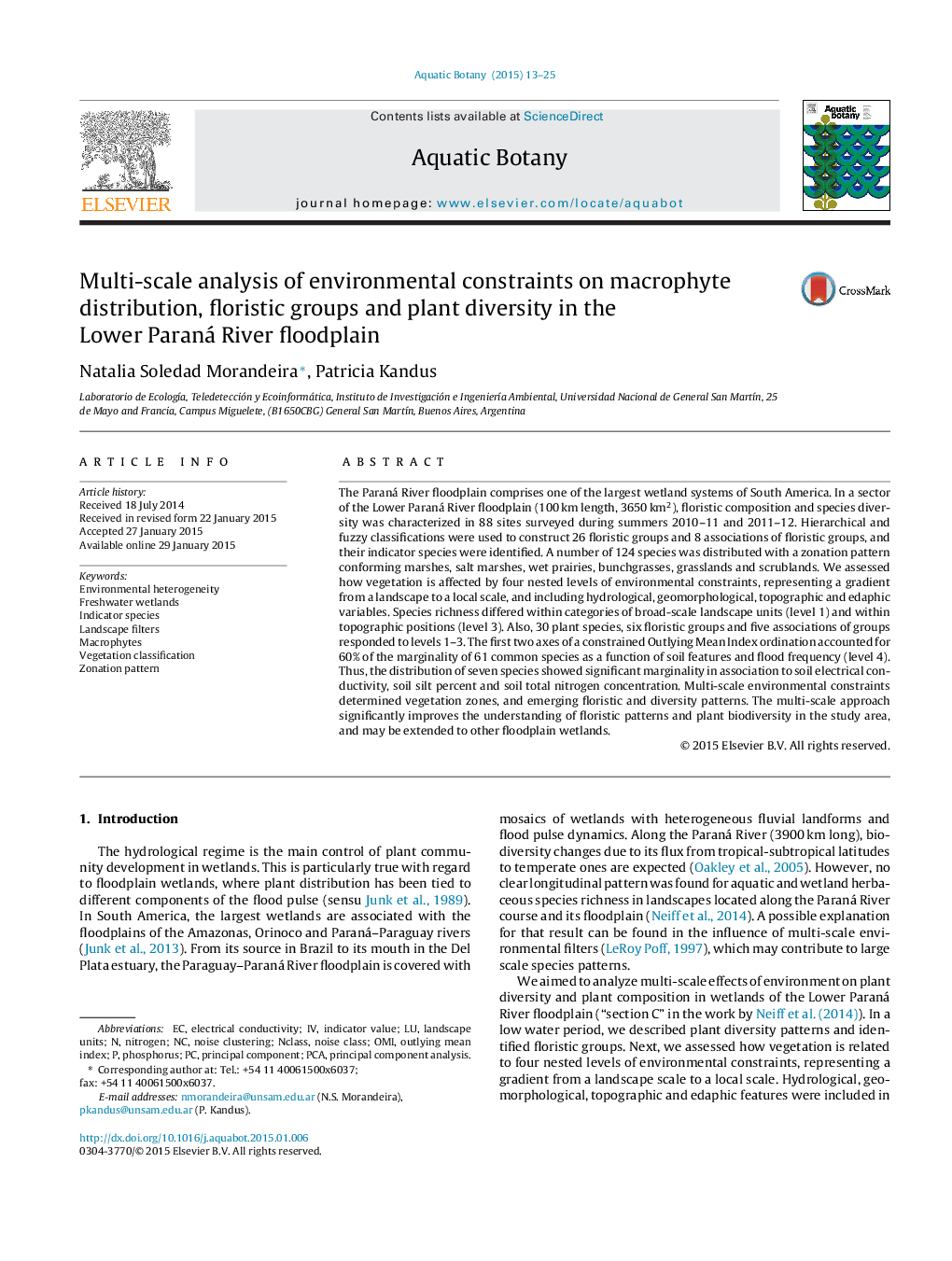| کد مقاله | کد نشریه | سال انتشار | مقاله انگلیسی | نسخه تمام متن |
|---|---|---|---|---|
| 4527639 | 1625819 | 2015 | 13 صفحه PDF | دانلود رایگان |

• In the studied floodplain, 124 macrophyte species occurred in 88 sampling sites.
• Floristic groups were constructed with hierarchical and fuzzy classifications.
• Four levels of environmental constraints (landscape to local scales) were assessed.
• Broad-scale levels were influential on plant patterns (30 indicator species).
• Local scale variables explained the marginal distribution of seven dominant species.
The Paraná River floodplain comprises one of the largest wetland systems of South America. In a sector of the Lower Paraná River floodplain (100 km length, 3650 km2), floristic composition and species diversity was characterized in 88 sites surveyed during summers 2010–11 and 2011–12. Hierarchical and fuzzy classifications were used to construct 26 floristic groups and 8 associations of floristic groups, and their indicator species were identified. A number of 124 species was distributed with a zonation pattern conforming marshes, salt marshes, wet prairies, bunchgrasses, grasslands and scrublands. We assessed how vegetation is affected by four nested levels of environmental constraints, representing a gradient from a landscape to a local scale, and including hydrological, geomorphological, topographic and edaphic variables. Species richness differed within categories of broad-scale landscape units (level 1) and within topographic positions (level 3). Also, 30 plant species, six floristic groups and five associations of groups responded to levels 1–3. The first two axes of a constrained Outlying Mean Index ordination accounted for 60% of the marginality of 61 common species as a function of soil features and flood frequency (level 4). Thus, the distribution of seven species showed significant marginality in association to soil electrical conductivity, soil silt percent and soil total nitrogen concentration. Multi-scale environmental constraints determined vegetation zones, and emerging floristic and diversity patterns. The multi-scale approach significantly improves the understanding of floristic patterns and plant biodiversity in the study area, and may be extended to other floodplain wetlands.
Journal: Aquatic Botany - Volume 123, May 2015, Pages 13–25